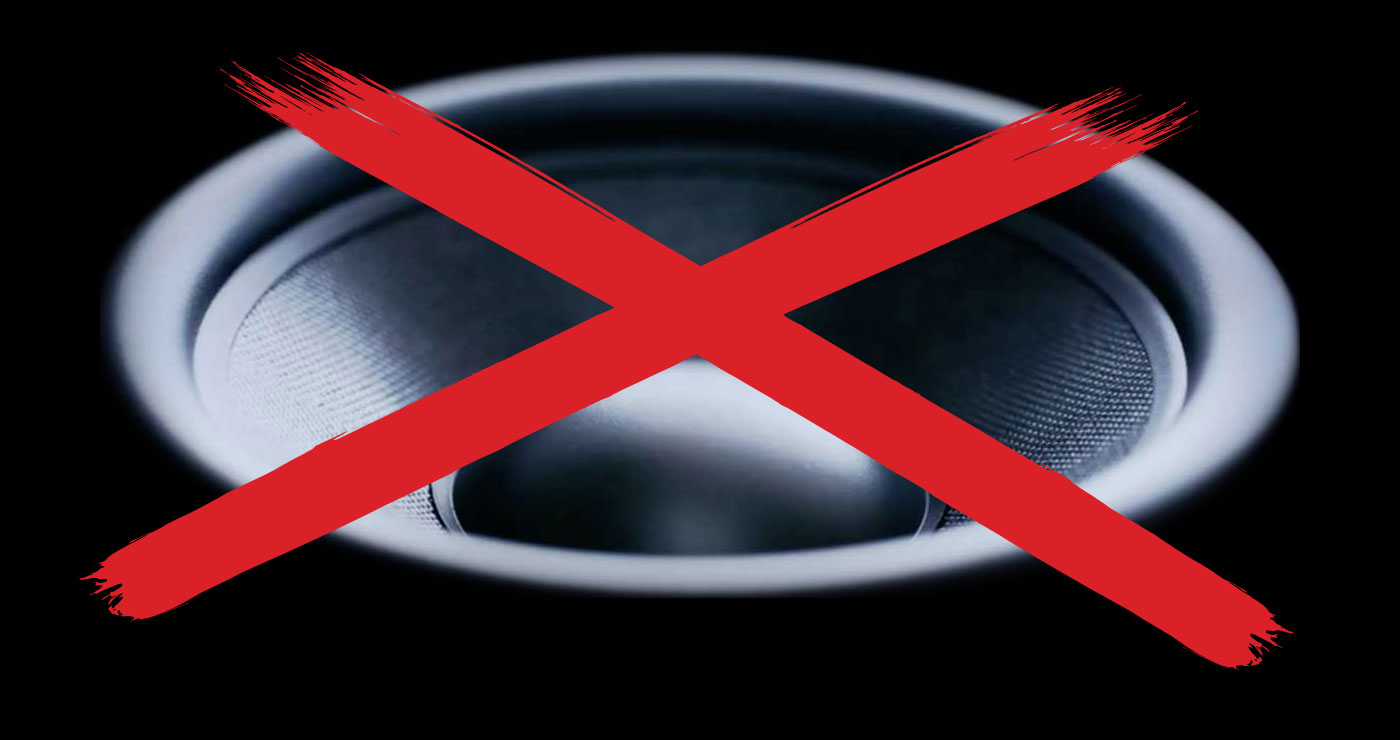The human ear is remarkably sensitive. Tap a wine glass, a plastic ruler, a ceramic mug, or jingle some coins and, even blindfolded, you can likely discern the object and its material based on the resulting sound.
Similarly, a loudspeaker expert can distinguish types of audio speakers based on how they sound. Whether it is a paper cone or a plastic one, a metal dome tweeter, a silk dome, or an electrostatic speaker, all of them, including expensive systems, produce undesirable resonance vibrations that are measurable in a waterfall plot and will obscure and muddy reproduction of audio.
Very few people have ever encountered audio drivers that come close to being resonance-free. Even live music is often delivered via the same flawed devices, and the auditory experience may be further affected by poor venue acoustics. So, just as we were in regards to televisions in the CRT era, before the advent of 4K OLED displays, we are oblivious to how incredible our favourite tracks and musicians can actually sound.
acousticWing®shifting resonance distortion to ultrasonic frequencies
The acousticWing® driver stands in a league of its own. The diaphragm, which looks and moves like a bird wing in flight, is ultra-rigid and resonance-free across almost the entire audible bandwidth. This approach is in complete opposition to almost all commercially available speakers, which feature some form of thin diaphragm that is prone to flexing.
Similarly the driver base is compact, ultra-rigid and entirely free of resonance across the audible bandwidth. In contrast to the cases of the plastic ruler, ceramic cup and conventional drivers mentioned above, tapping reveals no clue that it is constructed from aluminium (which ordinarily is known for resonance and a distinctive sound.)
So, whereas conventional speaker drivers and their floppy diaphragms exhibit resonance distortion thus muddying the sound across nearly the entire operating bandwidth, the acousticWing® driver pushes all but a few barely detectable resonance modes beyond human audibility and into the ultrasonic frequency range (20Hz+).
The result is unmatched purity, astonishing detail, transient speed and supremely vital audio reproduction. With the floppy-membrane-diaphragm barrier between artist and listener removed, you can now experience engagement and emotional depth far exceeding what is possible with mere mortal conventional speaker drivers. It’s like hearing your music for the first time.
acousticWing®advantages beyond pure-fidelity
No ‘floppy’ diaphragm surround
Conventional cone and dome diaphragms require a “floppy” rubber diaphragm surround and/or a “spider” component to facilitate their linear action. This creates an unresolvable tradeoff for designers, who must balance conflicting requirements for diaphragm excursion capability (requiring a wider area of rubber), low frequency bandwidth (requiring wider and softer rubber) and resonance distortion (requiring the exact opposite which is a narrower surround and harder rubber).
acousticWing® circumvents these compromises through its rotational “wing” diaphragm action to simultaneously achieve:
- Exceptional low-frequency extension.
- Exceptional diaphragm excursion (in headphone applications).
- Elimination of floppy components, contributing to exceptional resonance performance.
Integrated driver decoupling
acousticWing® incorporates an integrated and highly effective driver decoupling system.
Attaching a resonance-free driver rigidly to a larger, resonance-prone enclosure would normally undermine performance gains. In the case of acousticWing®, the rotational diaphragm action gives rise to a node axis of the driver base that can be utilised to provide effective, robust driver decoupling. This achieves exceptional resonance management not just from the driver but also of the enclosure, especially in suboptimal (resonance-prone) environments such as inexpensive home, automotive and electric piano speaker systems.
Sound dispersion
Using our “Zero” speakers as a deployment example: acousticWing’s® wide operating bandwidth facilitates a low crossover frequency, in this case is 570Hz.
- Operating a relatively small diaphragm to such low frequencies substantially reduces upper-midband sound beaming associated with the transducer.
- Off-axis cancellation resulting from phase cancellation between low and high frequency drivers is eliminated, because the crossover audio wavelength is larger than the separation between the two transducers.
For very high frequencies, acousticWing® characteristics that can be leveraged to maximize sound dispersion include:
- The “wing” diaphragm action results in zero phase cancellation across all directions perpendicular to the axis of rotation (theoretically across limitless bandwidth, at least while diaphragm rigidity is preserved).
- The primary sound-radiating region of a “wing” action diaphragm is quite narrow, which enables unusually wide dispersion across the same directions perpendicular to the axis of rotation.
- The diaphragm’s flatness may also facilitate good sound dispersion depending on deployment.
Reviews and critical reception of the Zero speakers highlight exceptional “soundstaging” and “imaging” capabilities. Although acousticWing® sound dispersion advantages described above may contribute towards this ability, the primary reason likely comes back to the low levels of resonance distortion inherent in the transducer system, which facilitates accurate reproduction of subtle spatial sound field cues captured in the original recording space.
Scalable:
The acousticWing® is highly scalable, and is suitable for smaller applications, such as earphones, and also for larger bass-mid drivers. Note that in the case of larger drivers, resonance distortion may not be shifted outside the audible bandwidth, but is still shifted outside the operating bandwidth.
This technology is still in its infancy, and there is a tantalising and also inevitable prospect that future designs, for example based on multiple sizes of acousticWing® drivers, will surpass even what the critically acclaimed “Zero” speakers achieve.
